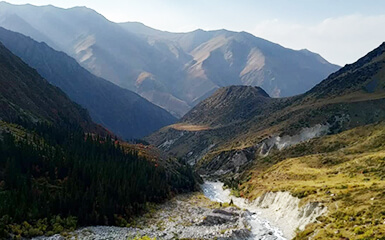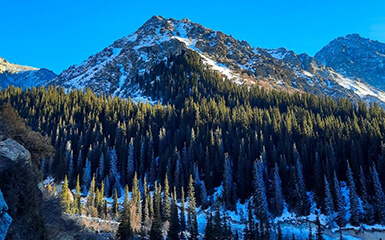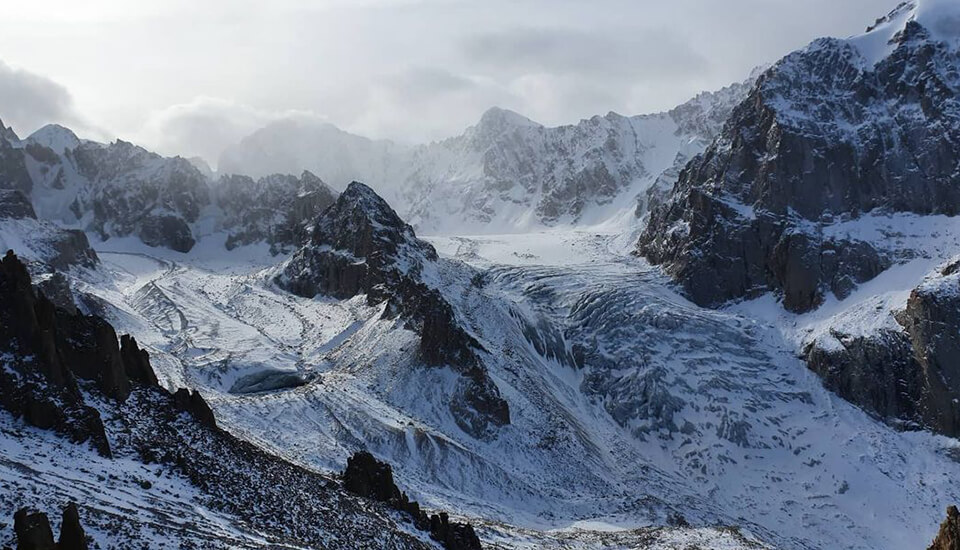The Ala-Archa National Park is a 194-km² high mountain national park in the Central Asian Republic of Kyrgyzstan. It is located in the Kyrgyz Ala-Too range, part of the Tian Shan, around 40 km south of the capital Bishkek in the Chui region.
"Ala-Archa" means "multi-coloured juniper", and the park has this name because of the extensive vegetation of its mountain slopes with hemispherical juniper, which appears here in many shades and which is particularly valued in Kyrgyz tradition. The smoke of a juniper fire is said to drive away evil spirits, but the tree should not be planted near the home, as - according to tradition - over time it sucks the power from the people living near it.
The park includes the gorges of the Ala-Archa River and its tributaries and the surrounding mountains with around 50 peaks and around 20 large and small glaciers. The glaciated area covers 33 km² (around 17% of the total area) and has shrunk by 17.9% since 1964. The glacier thickness has also decreased since the 1970s. Smaller mountain rivers that flow into the Ala-Archa River are fed by the meltwater from these glaciers.
Ala-Archa is rich in flora and fauna, with more than 800 species of plants and around 170 species of animals. In addition to birds and small animals, the extremely rare snow leopards, Pamir argalis, Siberian ibex, Siberian deer, wolves, brown bears, lynxes and Himalayan marmots can be found in the higher elevations of the park.
The park is easily accessible from Bishkek (around 45 minutes by car). It is open all year round and the entrance fee is minimal. Ala-Archa is a popular destination for hiking, picnicking, camping, mountaineering, climbing, glacier hiking and ice climbing. There are horse riding and skiing opportunities in the immediate vicinity. Riding tours along the main trails can also be arranged in the park. Camping is allowed in certain places. Angling and fishing, hunting, picking berries, flowers, blossoms and herbs, catching butterflies and other insects, and bringing dogs with you are not allowed.
The most popular seasons are late summer and early autumn. In spring and early summer, the mountain rivers are rapid and dangerous. The “Alpinada” festival takes place on May 1st, where hundreds of people camp in the valley and more than 100 of them climb the 4,143 m high peak.


